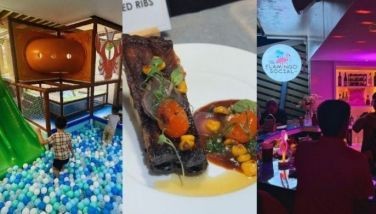In Sheep Year, Pinoys hope for peace
MANILA, Philippines - Just before galloping off, the Horse gave one last snort and kick, and left the nation grieving and in turmoil. Thus it is with anticipation that we welcome the Year of the Sheep, which starts tomorrow, hoping that its characteristic gentleness and meekness would help us find our way back to the path of peace.
There is some confusion on whether this is the Year of the Sheep or the Goat. In Chinese the same character, yang, can refer to either ruminant. Whether Sheep or Goat, the Lunar New Year’s Eve is the most important celebration in the whole year for Chinese, wherever in the world they may be. In China, the millions who go to the cities or other provinces to work jam bus and train stations in a mad rush to make it home for this holiday. Overseas Chinese with family members scattered in different countries may not be able to all get together, but it is a major celebration anyway for whoever is present, centered around the dinner tonight.
Traditions differ from province to province, even family to family. What is important is to get together around the family hearth to share a hearty meal, to celebrate the coming of spring – this is also called Chun Jie or Spring Festival – after the dark and cold winter, to celebrate renewal and a new beginning, with wishes for abundance and prosperity.
Not surprisingly, what goes into the meal is of paramount importance. While there is no set menu, there are some common dishes with symbolisms appropriate for the auspicious occasion.
Whether fish or fowl, it must be served whole; no fish fillets or chicken wings tonight. Some Tsinoy families, especially big clans, opt for a lechon. The idea is wholeness, and completion. There is a Hokkien saying – ooh tao, ooh be, meaning everything should have a beginning (tao, or head) and an end (be, or tail), no ningas cogon here.
There are also noodles for long life, tikoy or rice cake because it is sticky (to keep everyone together) and sweet (this is also called nian gao, which is a homonym for a great number of years, meaning long life), jiaozi or dumplings (a tradition from northern China adapted by us southerners) because they are shaped like the ancient gold ingots used as currency during the Ming Dynasty.
Whatever the menu may be, there should be plenty, with enough left over to be eaten the next day. This is in keeping with the popular aphorism nian nian you yu, meaning to have more than enough every year. That is also the reason behind having a whole fish at the table, since the word for fish, yu, is a homonym for surplus or excess.
When we were kids we were told to jump as high as we could as soon as we woke up on the first day of the year, this in order to grow tall. And there should be no quarreling, no complaining and no crying on the first day – you won’t get punished on the first day of the year, but watch out the next day!
The festive season lasts for 15 days, during which time it is still appropriate – if you missed doing so on the first day – to bai nian, greet relatives and friends (and kids get their angpao or red packets). New year banquets among groups of friends – classmates, business associates, eating clubs, barkadas – are also held within this period. It is indeed a season to celebrate plenty and to spread good wishes.
Xin nian kwai le or, in Hokkien, xin ni kwai lok; gong xi fa cai or kiong hee huat tsai – may you have a happy and prosperous New Year.
- Latest
- Trending































